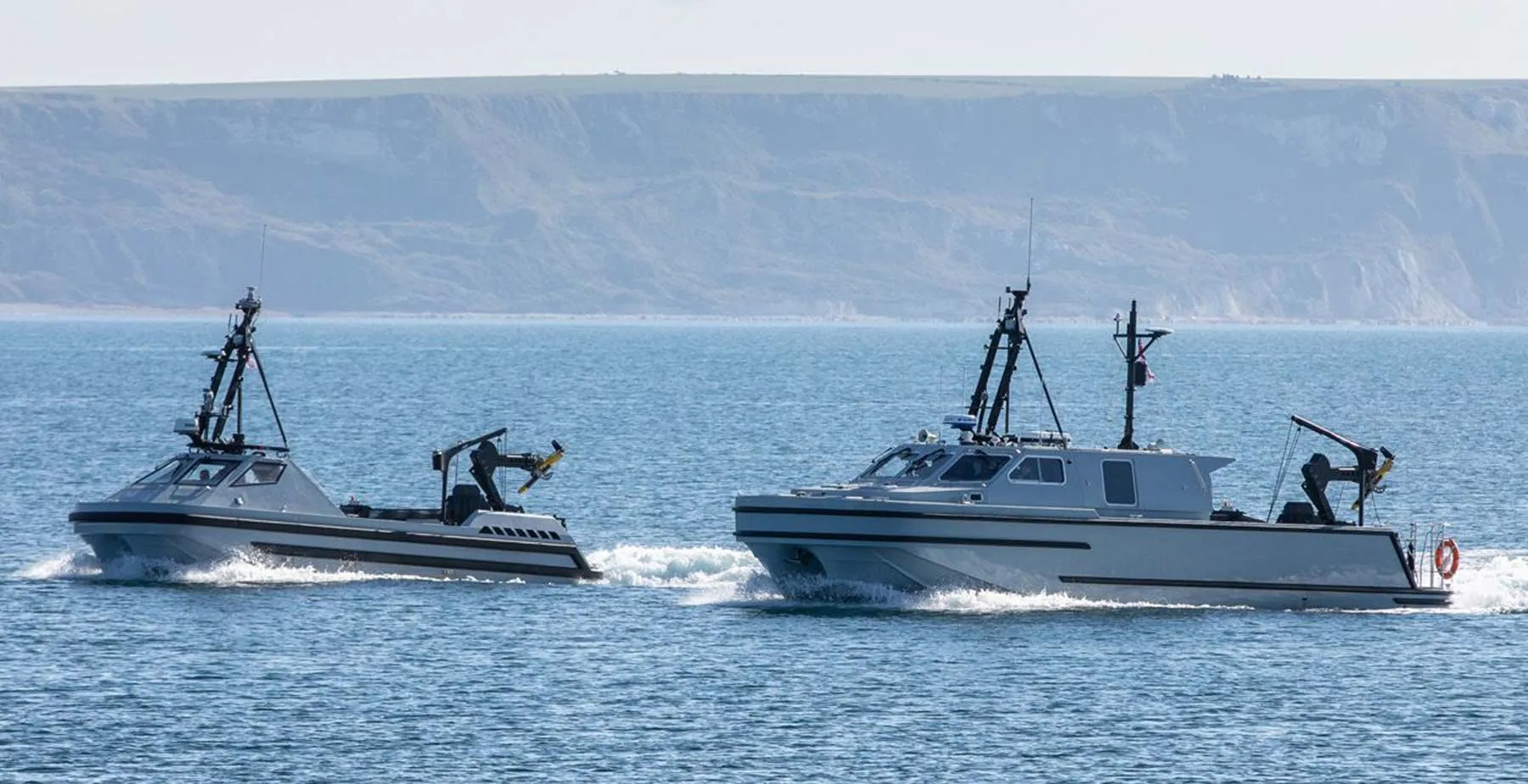Britain tests autonomous maritime mine hunter
11 December, 2024 Unloading an Apollo naval mine hunter drone. Photo: UK Ministry of Defence The Royal Navy has started testing an unmanned maritime mine hunter in Scotland.
The Ministry of Defense of the United Kingdom reported on this. The tests are conducted with an unmanned hunter called Apollo, which is being developed as part of the Maritime Mine Counter Measure (MMCM) project. The presented drone is a small autonomous boat-sized vessel that can be deployed from a larger ship.
Its main task is to scan the seabed to detect various types of mines.
 RNMB Harrier undergoing intensive trials on the River Clyde alongside RNMB Hebe in March 2022. Photo credits: Royal Navy
RNMB Harrier undergoing intensive trials on the River Clyde alongside RNMB Hebe in March 2022. Photo credits: Royal Navy
The mine hunter is being developed as part of a joint initiative by L3 Harris of the United States in partnership with Thales. This project is being implemented as a concept demonstrator to be delivered to the UK in 2021.
Currently, the Royal Navy is radically revising the concept of small fleets and plans to completely let go of the use of traditional minesweepers and minehunters in favor of unmanned vehicles in the coming years. In 2030, the Royal Navy plans to receive the first unmanned minehunters and make them the basis of its mine countermeasures, providing better mine detection capabilities and increased safety for crews. The project is being implemented jointly with France, and funds are being shared.
The contract's total value for the United Kingdom and France is EUR430 million, of which GBP184 million is due to the UK.
 Concept of using an unmanned mine hunter. Photo: AEUK
Concept of using an unmanned mine hunter. Photo: AEUK
"This trial, which successfully demonstrated the potential for the Maritime Mine Counter Measures capability to be deployed flexibly and at pace for the Royal Navy, is a result of years of dedicated effort and collaboration by the MHC team, demonstrating our commitment to advancing mine countermeasures technology and commercial platform integration," Andy Lapsley, DE&S Team Leader at MHC, shared. Militarnyi previously reported that the UK tested an Extra Large Autonomous Underwater Vehicle (XLAUV) to meet the needs of the Royal Navy.
The Herne device is designed to monitor and protect underwater infrastructure, anti-submarine warfare, and reconnaissance operations.
Herne performed a programmed mission of reconnaissance, surveillance, and reconnaissance during the tests using the high-tech Nautomate autonomous control system.